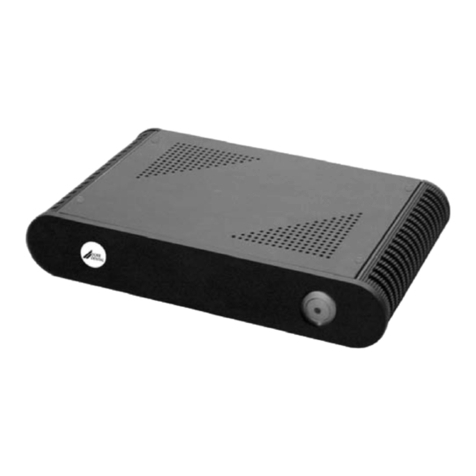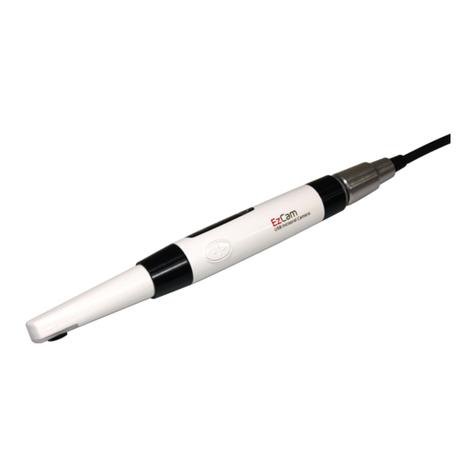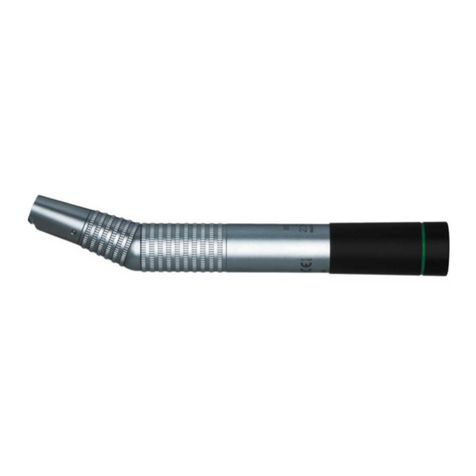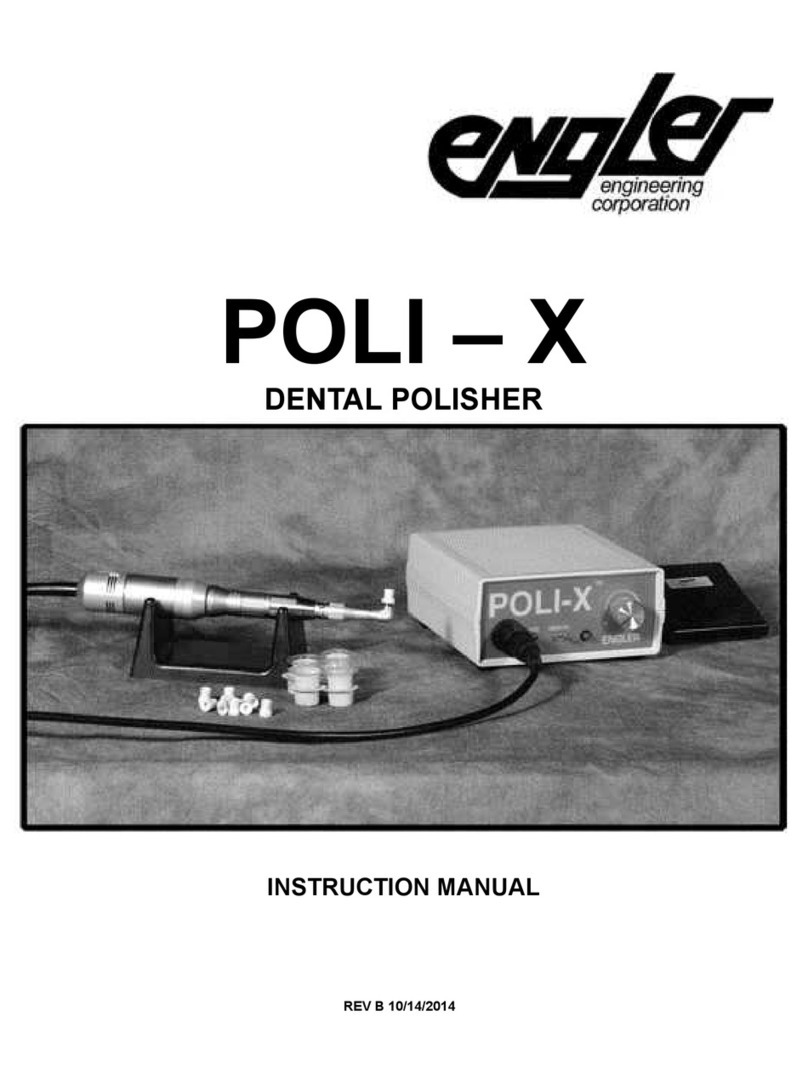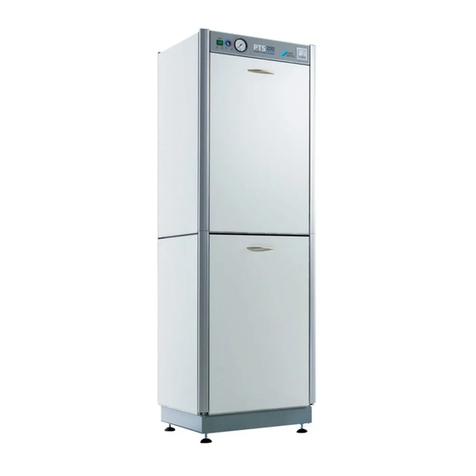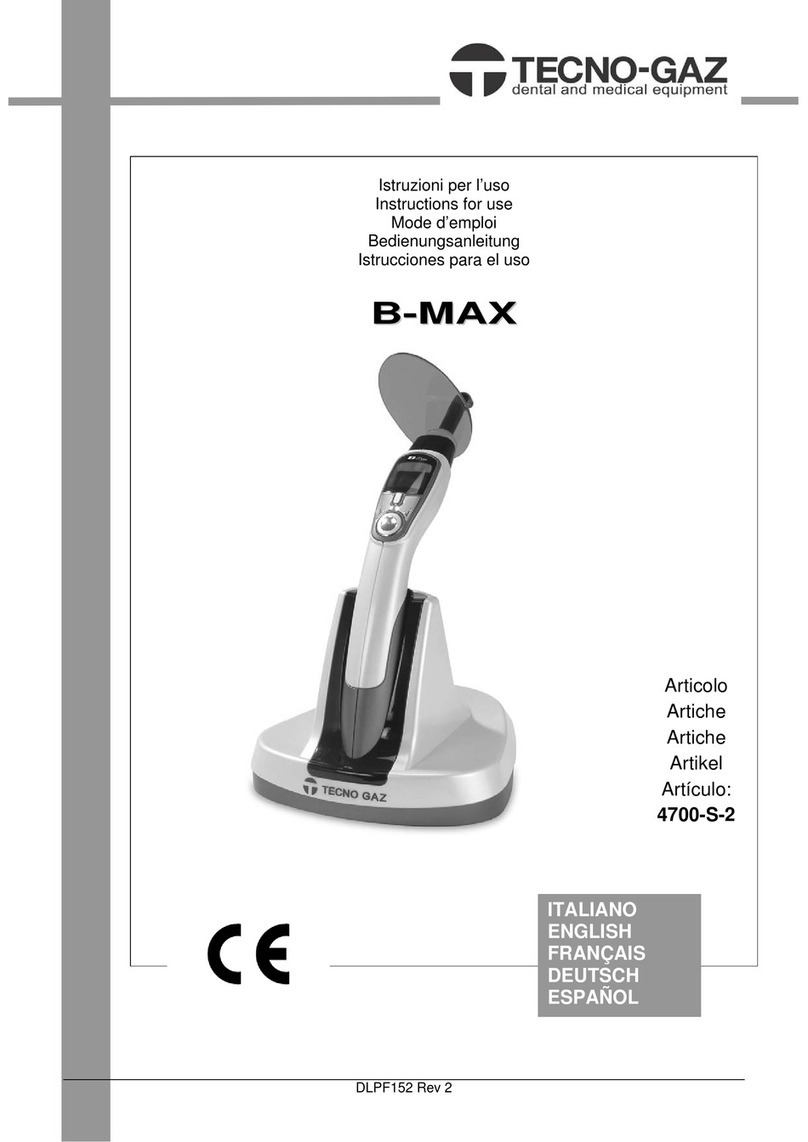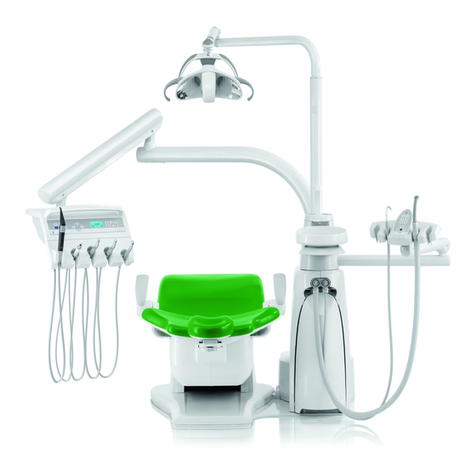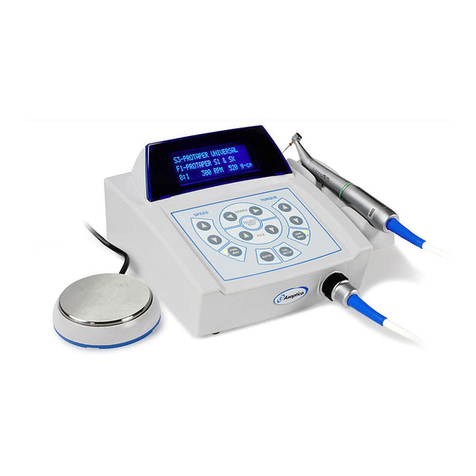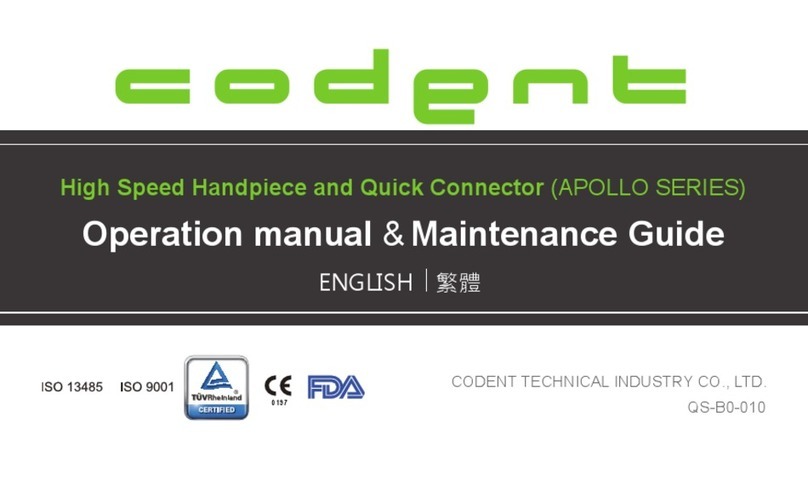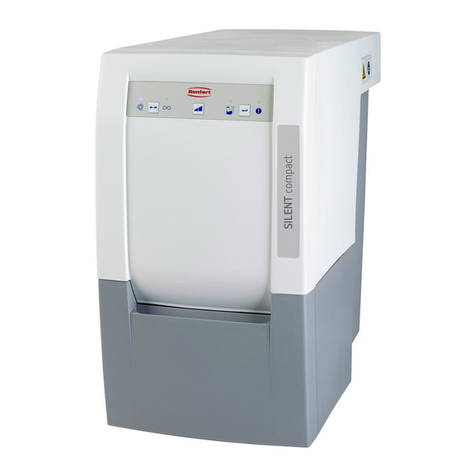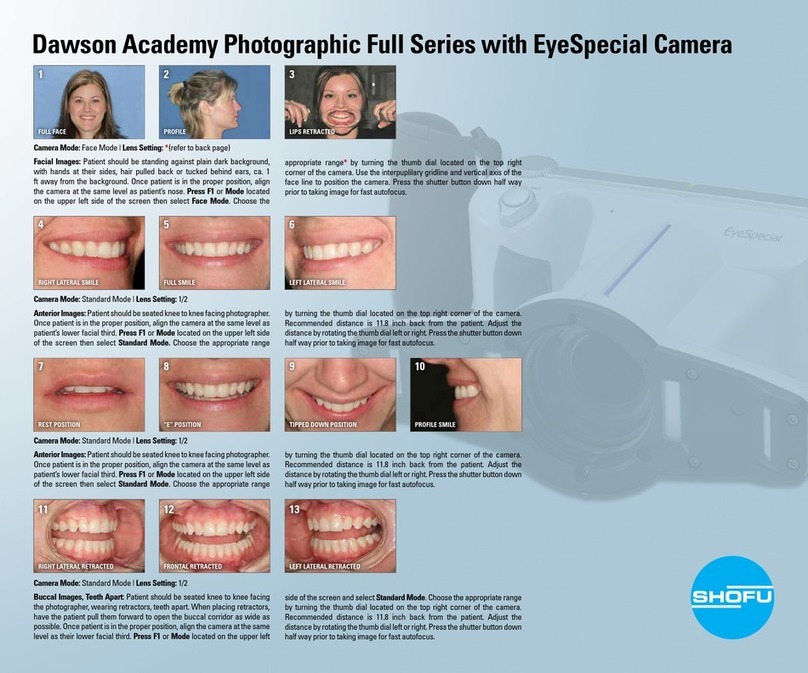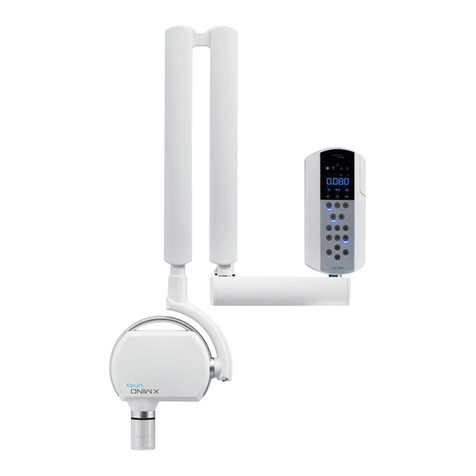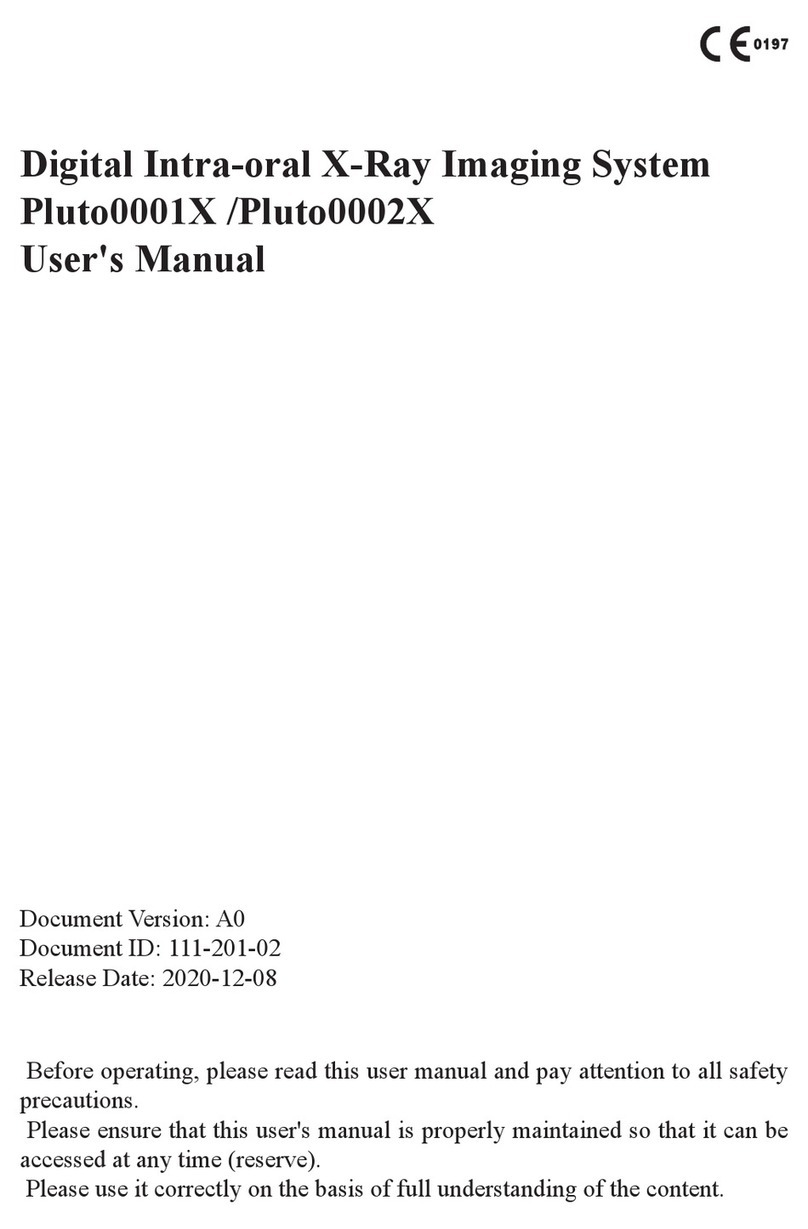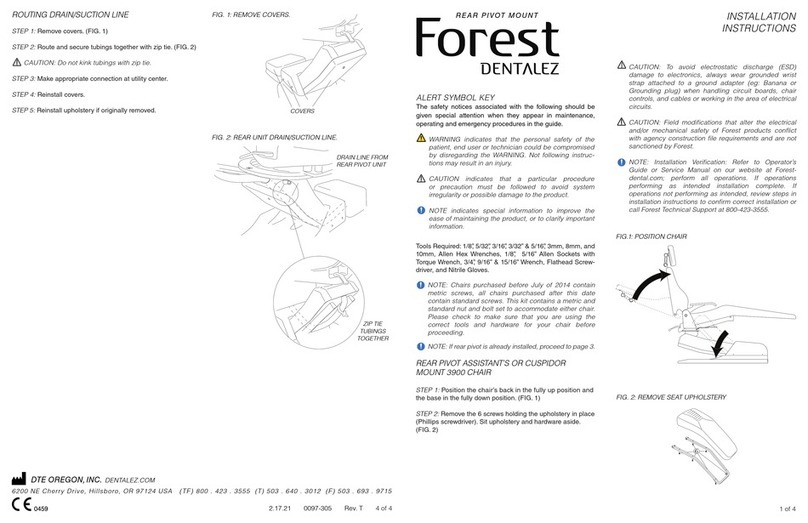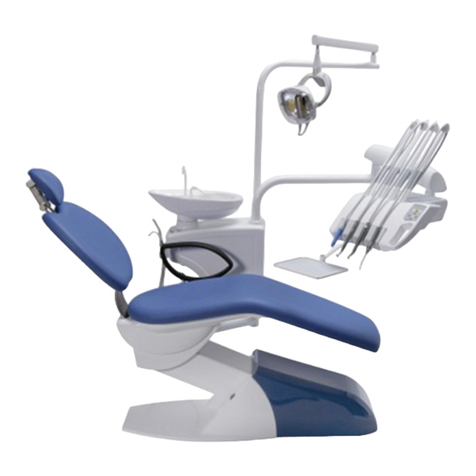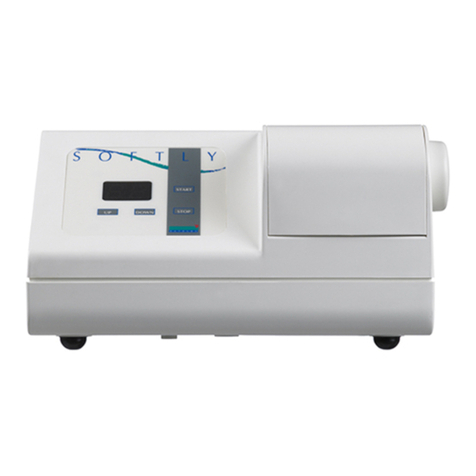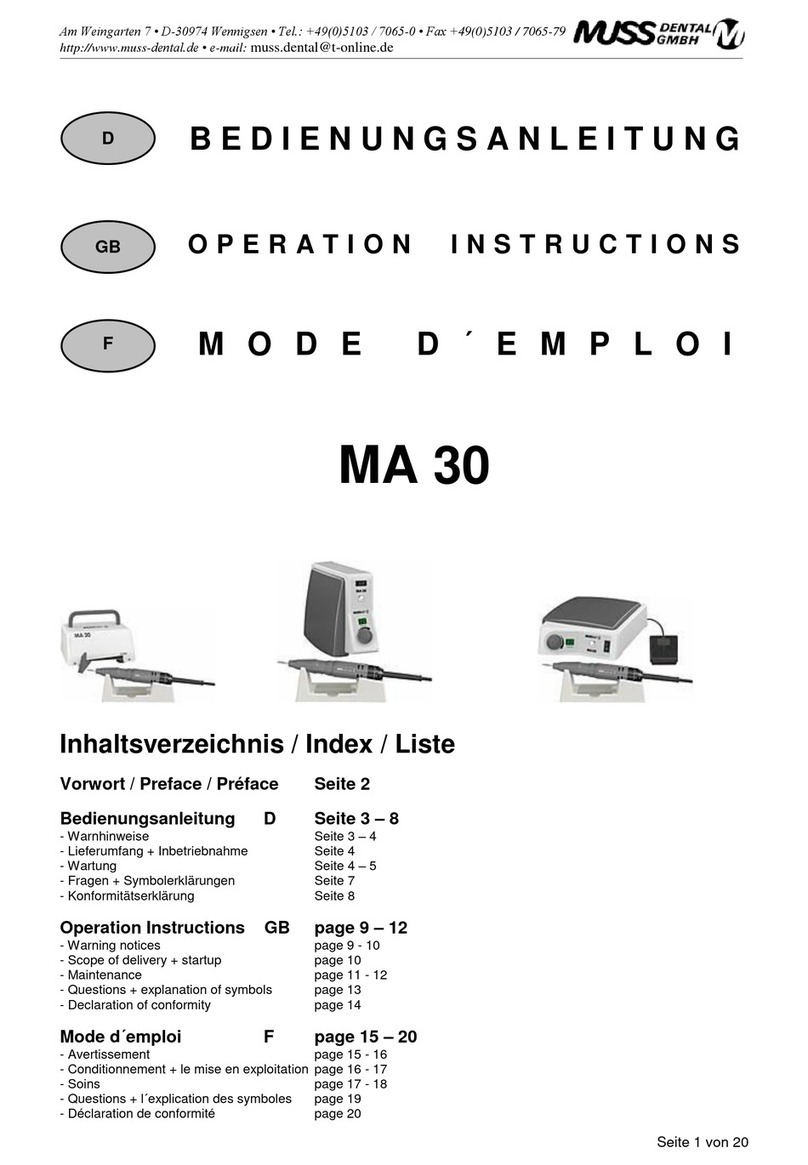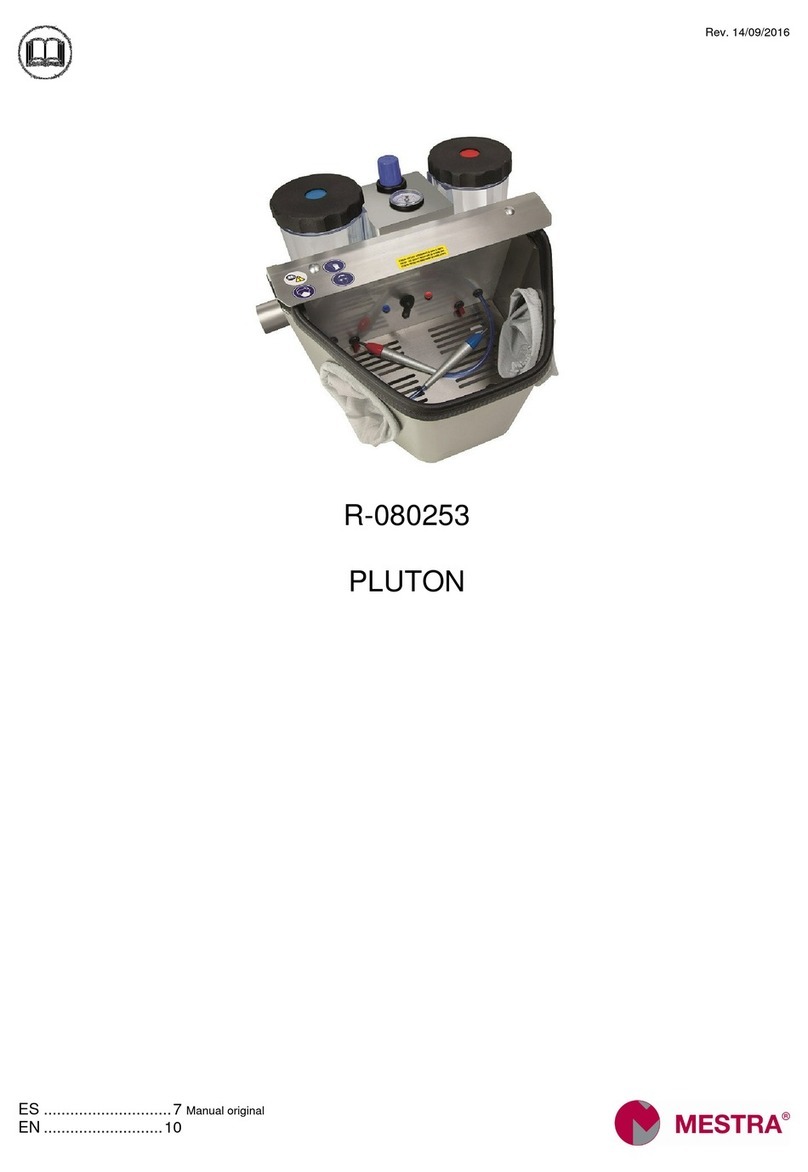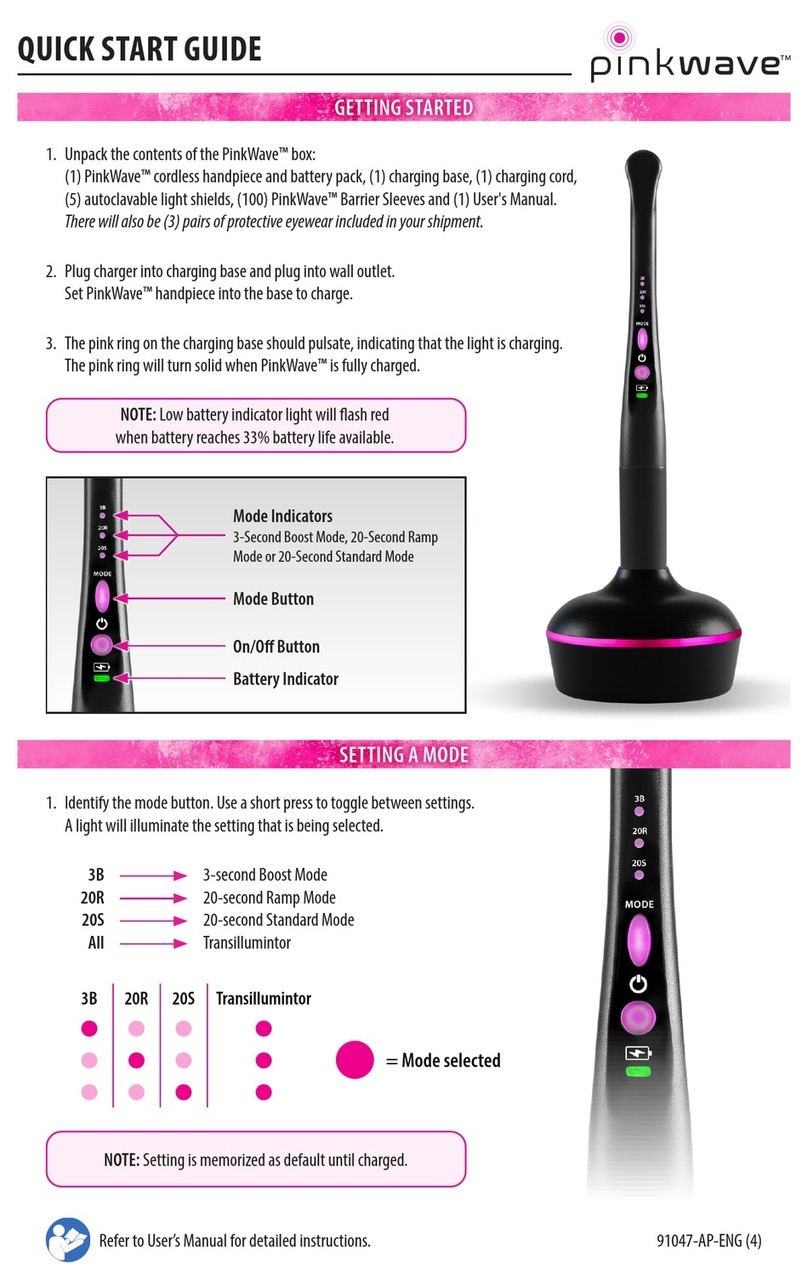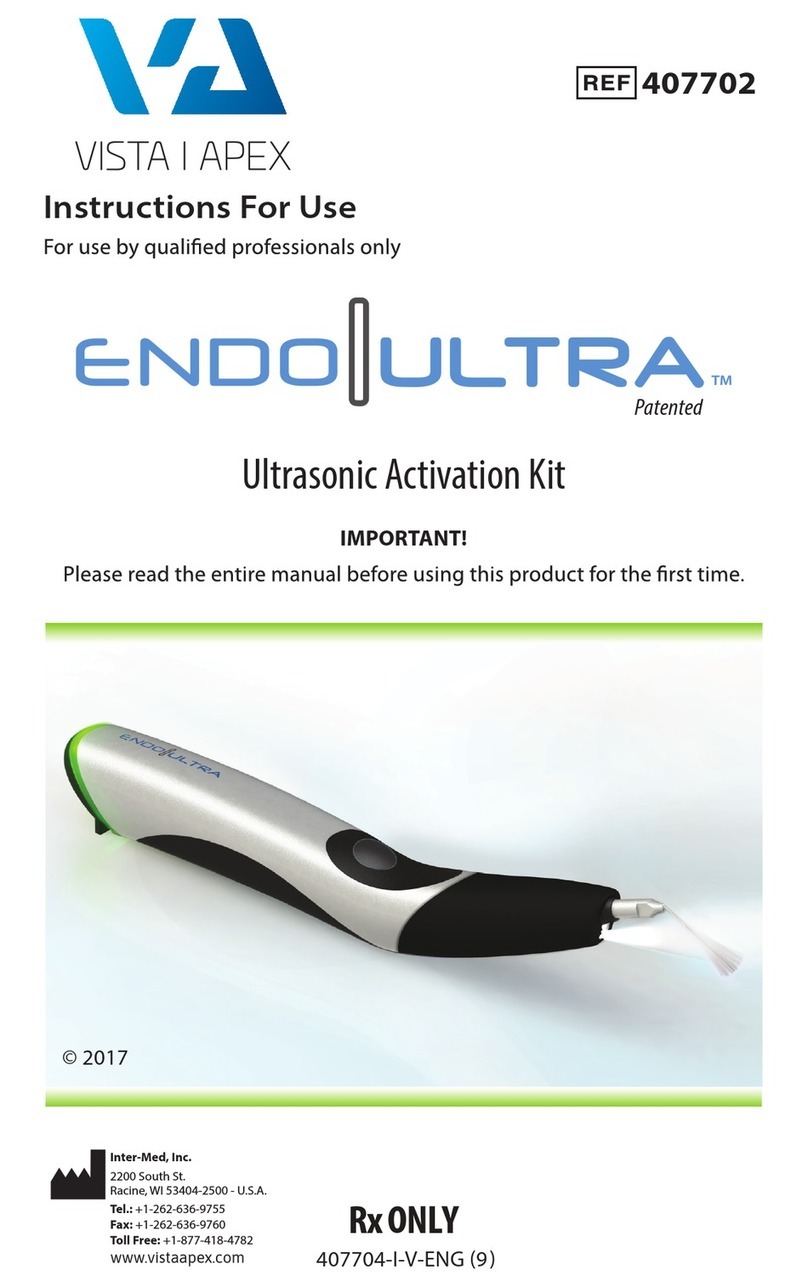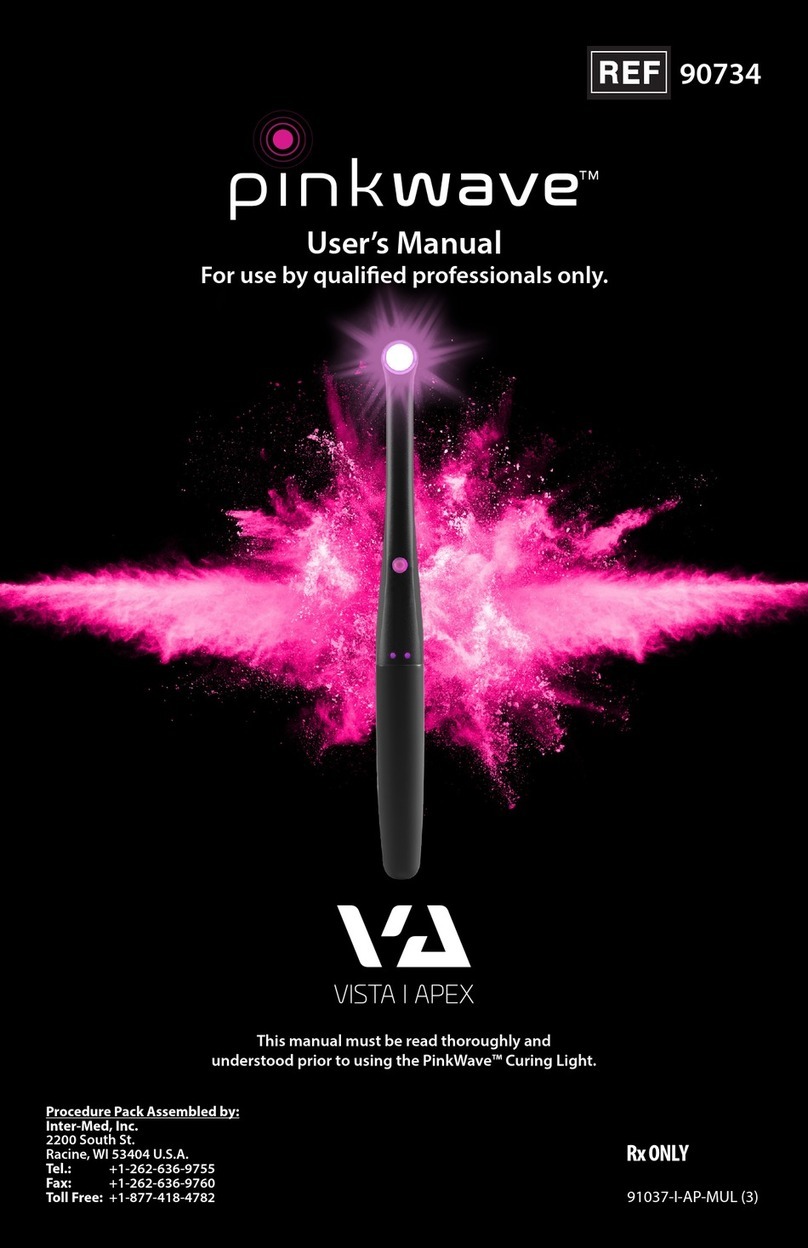
APPENDIX –
ELECTROMAGNETIC COMPATIBILITY AND
ELECTRICAL SAFETY INFORMATION
The Phasor™ heated composite delivery system is tested according to IEC 60601-1-2,
Edition 4.0.
Medical electrical devices are subject to particular preventive action according to
EMC rules and must be installed and operated according to the EMC guidelines in the
accompanying documents.
Guidance and Manufacturer's Declaration – Electromagnetic Emission
The following tables are guidelines according to the 4th edition of the medical
standard IEC 60601-1-2.
Phasor™ heated composite delivery system is intended for use in the electromagnetic
environment specied below. The customer or the user of the Phasor™ heated
composite delivery system should assure that it is used in such an environment.
EMISSION TEST COMPLIANCE ELECTROMAGNETIC ENVIRONMENT - GUIDANCE
RF emissions CISPR 11 Group 1 Phasor™ uses RF energy only for its internal function.
Therefore, its RF emissions are very low and are not likely to
cause any interference in nearby electrical equipment.
RF emissions CISPR 11 Class B
Phasor™ is suitable for use in all establishments, including
domestic establishments and those directly connected to
the public low-voltage power supply network that supplies
buildings used for domestic purposes.
Harmonic emissions IEC
61000-3-2 Complies N/A
Voltage uctuations / icker
emissions IEC 61000-3-3 Complies N/A
Table: According to IEC 60601-1-2, Edition 4.0
Guidance and Manufacturer's Declaration – Electromagnetic Immunity
The Phasor™ heated composite delivery system is intended for use in the
electromagnetic environment specied below. The customer or the user of the
Phasor™ heated composite delivery system should assure that it is used in such
an environment.
IMMUNITY TEST IEC 60601
TEST LEVEL
COMPLIANCE
LEVEL
ELECTROMAGNETIC ENVIRONMENT -
GUIDANCE
Electrostatic
discharge (ESD) IEC
61000-4-2
± 6 kV contact
± 15 kV air ± 6 kV contact
± 15 kV air
Floors should be concrete or ceramic tile. If oors
are covered with synthetic material, the relative
humidity should be at least 30%.
Electric fast transient
/ burst IEC 61000-4-4 ± 2 kV for power
supply lines ± 2 kV for power
supply lines Mains power quality should be that of typical
commercial or dental environment.
Surge IEC
61000-4-4 ± 1 kV line - line
± 2 kV line - earth ± 1 kV line - line
No prot. earth Mains power quality should be that of typical
commercial or dental environment.
20
Voltage dips, short
interruptions and
voltage variations
on power supply
input line IEC
61000-4-11
<5% UT (>95% dip
in UT) for 0.5 cycle
40% UT (60% dip in
UT) for 5 cycles
70% UT (30% dip in
UT) for 25 cycles
<5% UT (>95% dip
in UT) for 5 sec
<5% UT (>95% dip
in UT) for 0.5 cycle
40% UT (60% dip in
UT) for 5 cycles
70% UT (30% dip in
UT) for 25 cycles
<5% UT (>95% dip
in UT) for 5 sec
Mains power quality should be that of typical
commercial or dental environment. If the user of
the Phasor™ requires continued operation during
power mains interruptions,
it is recommended that the Phasor™
be powered from an uninterruptible
power supply or battery.
Power frequency
(50/60Hz)
magnetic eld
IEC 61000-4-8
3 A/m 3 A/m Power frequency magnetic elds should be at
levels characteristic of a typical location in a
typical commercial or dental environment.
Portable and mobile RF communications equipment should not be used closer to
any part of the Phasor™, including cables, than the recommended separation distance
calculated from the equation applicable to the frequency of the transmitter.
Recommended separation distance
Conducted RF
IEC 61000-4-6 3Vrms
150 kHz to 80 MHz 3V d = 0.35 √P
Radiated RF
IEC 61000-4-3 3 V/m
80 MHz to 2.5 GHz 10 V/m
d = 0.35 √P 80 MHz to 800 MHz
d = 0.70 √P 800 MHz to 2.5 GHz
Where P is the maximum output power rating
of the transmitter in watts (W) according to
the transmitter manufacturer and d is the
recommended separation distance in meters (m).
Field strengths from xed RF transmitters,
as determined by an electromagnetic site survey
(a), should be less than the compliance level in
each frequency range (b). Interference may occur
in the vicinity of equipment marked with the
following symbol:
Table: According to IEC 60601-1-2, Edition 4.0
NOTE: UT is the a.c. mains voltage prior to application of the test level.
NOTE: At 80 MHz and 800 MHz, the higher frequency range applies.
NOTE: These guidelines may not apply in all situations. Electromagnetic propagation is aected
by absorption and reection from structures, objects and people.
a - Field strengths from xed transmitters, such as base stations for radio (cellular/cordless)
telephones and land mobile radios, amateur radio, AM and FM radio broadcast and
TV broadcast cannot be predicted theoretically with accuracy. To assess the
electromagnetic environment due to xed RF transmitters, an electromagnetic
site survey should be considered.
If the measured eld strength in the location in which the Phasor™ heated composite delivery
system is used exceeds the applicable RF compliance level above, the Phasor™ should
be observed to verify normal operation. If abnormal performance is observed, additional
measures may be necessary, such as reorienting or relocating the Phasor™ heated composite
delivery system.
b - Over the frequency range 150 kHz to 80 MHz, eld strength should be less than 10 V/m.
IMMUNITY TEST IEC 60601
TEST LEVEL
COMPLIANCE
LEVEL
ELECTROMAGNETIC ENVIRONMENT -
GUIDANCE
21
Recommended Separation Distances Between Portable and Mobile
RF communications equipment and the “Phasor™ Heated Composite
Delivery System”
The Phasor™ heated composite delivery system is intended for use in the
electromagnetic environment in which radiated RF disturbances are controlled.
The customer or the user of the Phasor™ heated composite delivery system can
help prevent electromagnetic interference by maintaining a minimum distance
between portable and mobile RF communications equipment (transmitters) and the
Phasor™ heated composite delivery system as recommended below, according to the
maximum output power of the communication equipment.
Rated Maximum
Output Power of
Transmitter (W)
Separation Distance According To Frequency of Transmitter (m)
150 kHz to 80 MHz
d = 0.35 √P 80 MHz to 800 MHz
d = 0.35 √P 800 MHz to 2.5 GHz
d = 0.7 √P
0.01 0.035 0.12 0.23
0.1 0.11 0.38 0.73
1 0.35 1.2 2.3
10 1.1 3.8 7.3
100 3.5 12 23
Table: According to IEC 60601-1-2, Edition 4.0
For transmitters rated at a maximum output power not listed above,
the recommended separation distance d in meters (m) can be determined
using the equation applicable to the frequency of the transmitter, where P is the
maximum output power rating of the transmitter in watts (W) according to the
transmitter manufacturer.
NOTE: At 80 MHz and 800 MHz, the separation distance for the higher frequency range applies.
NOTE: These guidelines may not apply in all situations. Electromagnetic propagation is aected
by absorption and reection from structures, objects and people.
22




















